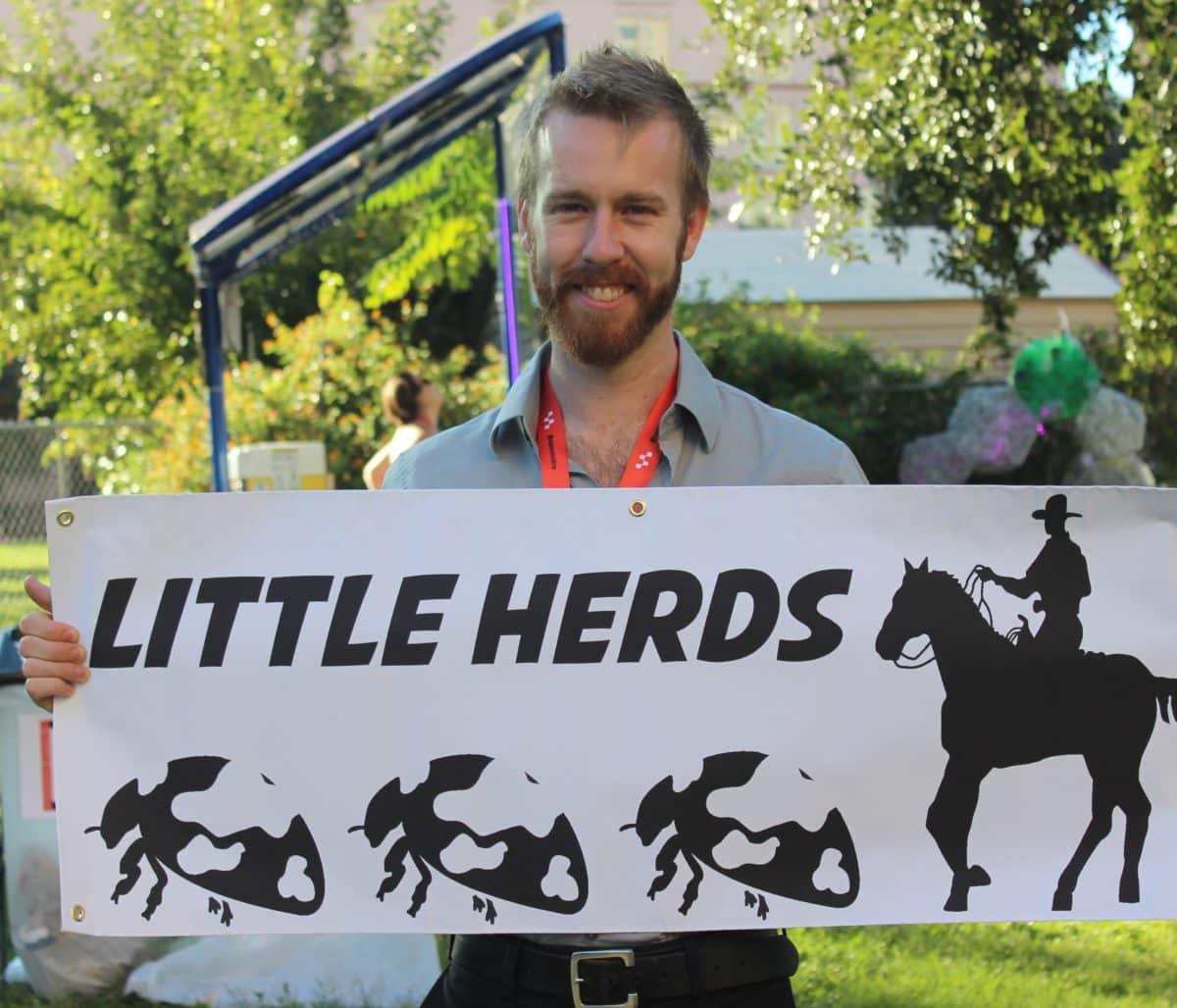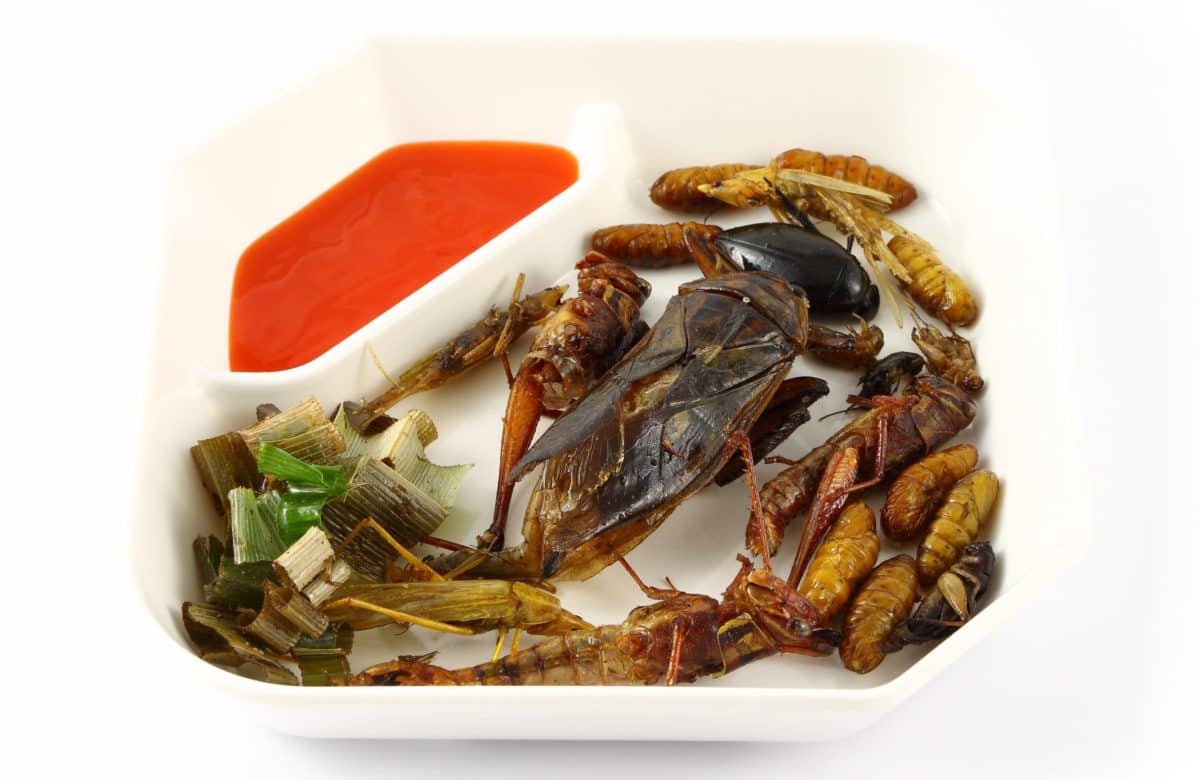My mother once emailed me a video as a joke, with the subject line “ento,” and a note, “This sounds like something you’d try, but I’ll never do it!” The video was about entomophagy, or insect-eating, and how insects are both high in nutrition and low on environmental impact when compared to other meat sources. I took it seriously and began learning everything I could about why we should eat bugs.
I started by reading everything I could find: online searches, news articles, cookbooks. Guess what? The United Nations has been thinking about edible insects for a while. Not surprising, considering world hunger and the environmental damage from our food network are both high priorities for them. I called universities that had renowned entomology departments, leaving shy messages about wanting to cook bugs in Austin, Texas. I learned that insects are high in protein and that many species are high in iron, calcium, and other essential vitamins and minerals. Some insects even have more protein and iron than beef!
As I dug deeper and deeper, I learned that with a fraction of the land, water, and feed that other meats consume, we can get far more nutritious food from insects. They also produce a fraction of the waste and greenhouse gas emissions that our other meats produce. Incorporating insects into our diets can help us cut back on overfishing, deforestation, and fresh water usage. That seems like a good idea.
The next revelation was even more wonderful: most people on our planet aren’t grossed out by them. Many different and diverse cultures eat insects, sometimes as a delicacy, sometimes as street food. North Americans are kind of the odd ones out here when we balk at the idea. I’m always amazed at how many people can say, “I’ve eaten a bug before,” from traveling abroad or having friends and family members who’ve introduced them in private. Yet eating insects is uncommon in America, and that’s really a shame, because the final box on the pro-bug side is the best.
Insects taste good. When prepared with the slightest of cooking experience — and I’m no chef or baker — they can be delicious in flavor and texture and aroma. There are thousands of insect species with subtle or stark differences, and their diet can be altered to enhance or alter their flavor. What’s even more amazing, they can be ground into highly nutritious flour that can be incorporated into approachable and familiar recipes. Chocolate chip cookies, banana bread, pancakes, pasta, tortillas… add insect flour and you can’t tell the difference.
The summer after my mom’s email I stumbled upon the Zilker Park Bug Festival in Austin, going on its fifth year. We handed out insect cookies from local bakers at this family-friendly event to help break the psychological taboo against eating bugs. When somebody takes the first bite knowingly of an insect cookie, it forces them to really think about what food means to them and the impact of what they eat.
After seeing the reaction kids have to them, we knew where to start. We can teach kids about edible insects before their minds are closed to the idea, and insect flour in cookies is a good way to start. If we can at least make dessert healthier, we’re taking a step in the right direction.

I discovered Chapul Bars, a protein bar made with cricket flour. I found World Entomophagy creating these bug flours for use by home cooks. I learned about Tiny Farms, a company involved in mealworm farming. I found Don Bugito, a food truck in Austin serving mealworm tacos. I found people around the country and the world using edible insects and trying to explain why the heck they wanted people to bite into bugs. This isn’t a gag, a novelty, a dare, or an episode of fear-factor. This is a way for people to eat healthier food that can be grown cheaply, easily, and sustainably almost anywhere on the planet.
I founded a nonprofit organization, Little Herds, in 2013 to educate the public about this amazing and underutilized resource, to help regulatory agencies standardize clean, safe, sustainable and ethical practices; to encourage entrepreneurs and forward-thinking businesses to explore the idea and to foster research into other applications for insects like bioplastics, biofuels, better agricultural feed, and healthier pet food. Edible insects are one answer to a lot of very real and very pressing issues.
I started this journey with the help of many incredible people and organizations. Little Herds would love to show you why we think eating bugs is the tastiest way to save both the people and the planet. Oh, and Mom tried the bugs and loved ‘em! ![]()
